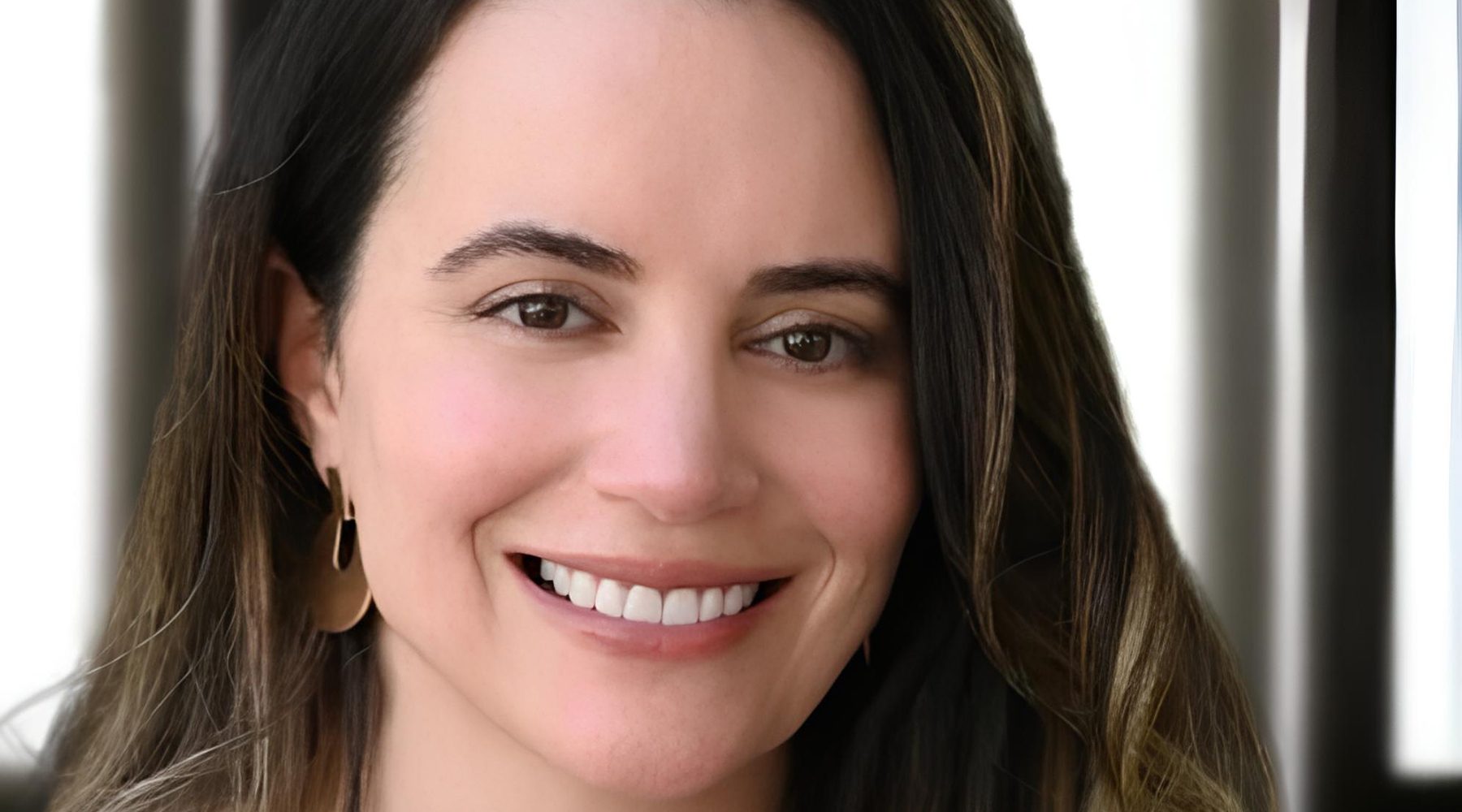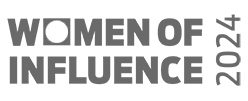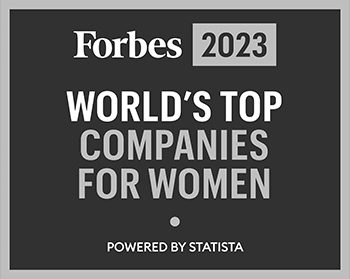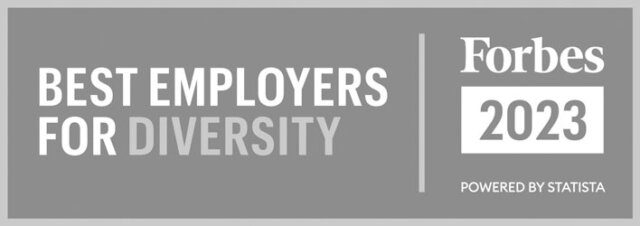Embrace ambiguity. I wish someone had emphasized the importance of embracing ambiguity. Early in my career, I believed that leadership was all about having a clear-cut plan and unwavering certainty. However, the business world often throws curveballs that demand flexibility and the ability to pivot on short notice. I vividly recall a project that seemed to be on a smooth trajectory until a sudden market shift altered the landscape. Adapting quickly and leading my team through that transition taught me that the most effective leaders are those who thrive in uncertainty.
As a part of our interview series called “Women Of The C-Suite”, we had the pleasure of interviewing Kevelyn Guzman.
In her role as the COO of Coldwell Banker Warburg (formerly Warburg Realty), Kevelyn oversees all internal functions within the company, ranging from managing a staff of 25 employees and over 100 agents across two offices to handling accounting, financial reporting, budgeting, business systems, human resources, contract administration, office operations, and corporate marketing.
Throughout her tenure, Kevelyn has been a driving force behind several game-changing initiatives and pivotal relationships and partnerships, including the successful rebranding of the company under the Coldwell Banker Global Luxury program in 2021. She has disrupted the traditional brokerage model by viewing agents as the clients and constantly seeks innovative ways to empower agents for long-term success in the competitive Manhattan real estate market.
Thank you so much for joining us in this interview series! Before we dig in, our readers would like to get to know you a bit more. Can you tell us a bit about your “backstory”? What led you to this particular career path?
Iam a born and bred New Yorker with a knack for strategy, a passion for making things happen, and a genuine love for connecting with people. I’ve been part of the Coldwell Banker Warburg (formerly Warburg Realty) family since 2008. Currently, I’m the COO at Coldwell Banker Warburg, which means I’m the one overseeing all the behind-the-scenes action, from managing our awesome team of employees and over 100 agents across two offices, to handling all things accounting, financial reports, budgeting (yes, the thrilling world of budgeting), business systems, HR, contracts, office operations, and even marketing — it’s a juggling act.
Before I landed at Coldwell Banker Warburg, my journey began on Wall Street, more than 20 years ago, with a real estate investment firm. I hold a Bachelor of Science degree in Business from Mercy University-Dobbs Ferry (formerly Mercy College). I’m a member of the REBNY Fellows Leadership Program and CHIEF, an organization for women leaders.
Can you share the most interesting story that happened to you since you began leading your company?
The most intriguing story that unfolded during my leadership journey wasn’t about a single event, but rather a gradual shift in mindset — a realization that nurturing relationships was an investment in the present and the future, leading to connections that would prove to be some of the most enriching and enduring aspects of my life.
Early on in my leadership journey, I was eager to prove my capabilities, striving to oversee tasks and projects with efficiency and precision. As I navigated the intricacies of leadership, I observed the relationship dynamics around me. Some leaders seemed to treat their team members and colleagues as interchangeable cogs in a machine — resources to be expended and replaced as needed. However, as time went on, I began to recognize that there was something fundamentally different in the way I approached relationships. I saw the potential in my team members, not just as assets to complete tasks, but as individuals with unique talents, aspirations, and stories.
This realization sparked a shift in my mindset. I started investing time and effort in understanding their strengths, interests, and goals beyond the confines of the office. This transformation in my perspective had a profound impact on how I approached leadership and life in general.
It has been said that our mistakes can be our greatest teachers. Can you share a story about the funniest mistake you made when you were first starting? Can you tell us what lesson you learned from that?
One incident, in particular, stands out to me as both humorous and enlightening.
I had received a complaint about the weight of the utensils in our office kitchen, and the type of soap we had in the bathroom. In retrospect, these concerns seem trivial, but in the heat of the moment, they triggered a rapid response from me. I leaped out of my seat, ready to check the weight of our utensils and smell the soap, and address these issues with the same fervor I would apply to a major crisis, even though I had a capable office manager to handle this.
As I reflect on that comical situation, I see the stark contrast between my initial reaction and the principles I eventually embraced. The turning point came when I stumbled upon the Eisenhower Matrix, also known as the Urgent-Important Matrix. This simple yet powerful tool helped me categorize tasks and issues based on their urgency and importance.
By incorporating the matrix into my decision-making process, I started taking a step back and evaluating the true significance of each task. I realized that not everything required an immediate response and that not every concern warranted my direct involvement. The matrix guided me to focus on what truly mattered, rather than reacting impulsively to every demand.
None of us are able to achieve success without some help along the way. Is there a particular person who you are grateful towards who helped get you to where you are? Can you share a story about that?
I deeply appreciate the role that Frederick Warburg Peters has played in shaping my journey. Over the course of the past 16 years working closely with him, a significant episode stands out that underscores his profound impact on my perspective. Amidst the demanding schedule and tireless commitment I had invested in my work, Frederick shared a poignant insight that has reverberated with me ever since.
He candidly expressed that life finds its true meaning within the embrace of family and the bonds we build with our loved ones. This resonated deeply with me, as I had been pouring myself into my professional responsibilities, sometimes at the expense of my personal life. Frederick’s words served as a turning point. He made me realize that success, though important, should be intertwined with nurturing relationships and cherishing those closest to us.
Frederick’s enduring presence as a mentor, collaborator, and friend has been a constant source of inspiration. His guidance has not only propelled my professional trajectory but has also enriched my understanding of the profound interplay between ambition and the foundation of personal relationships. I am forever grateful for his wisdom and steadfast companionship along this remarkable path.
Leadership often entails making difficult decisions or hard choices between two apparently good paths. Can you share a story with us about a hard decision or choice you had to make as a leader?
At the onset of the pandemic in early 2020, closing our offices — a move driven by the safety and well-being of our team — was the initial step in an intricate series of decisions. The fog of uncertainty shrouded the path ahead, as we grappled with a novel foe we had yet to fully comprehend. Fear loomed large, casting shadows on the familiar landscape we once knew.
The most heart-wrenching aspect was the impact on our people — our invaluable team members who make our organization thrive. Furloughs became an unfortunate necessity, and salary reductions added to the weight of the situation.
Balancing the practicalities with empathy, we traversed a landscape fraught with challenges and uncertainties. But we remained committed, and got through it. The story of this difficult decision echoes the essence of leadership — the burden of making choices that carry profound implications, the struggle of steering a course in uncharted waters, and the resolve to foster unity and hope even in the bleakest of circumstances.
Ok, thank you for that. Let’s now jump to the primary focus of our interview. Most of our readers — in fact, most people — think they have a pretty good idea of what a CEO or executive does. But in just a few words can you explain what an executive does that is different from the responsibilities of the other leaders?
An executive meticulously weaves together a grand vision, skillfully combining foresight with a compassionate touch. They gracefully navigate the delicate balance between strategic planning and hands-on implementation, conducting a symphony where every individual’s contribution forms a harmonious narrative of achievement. It’s about shouldering the weight of decisions while uplifting the collective spirit, reminding us that leadership is a journey of humility and grace.
What are the “myths” that you would like to dispel about being a CEO or executive? Can you explain what you mean?
Myth: CEOs have all the answers. The reality is that CEOs face complex challenges and uncertainties. They rely on their teams’ expertise and diverse perspectives to make informed decisions rather than having all solutions themselves.
Myth: CEOs are always serious. The reality is that effective CEOs maintain a balance between professionalism and approachability. They understand the importance of building relationships and fostering a positive work environment.
Myth: CEOs have unlimited free time. The reality is that being a CEO or executive often means working long hours, making crucial decisions, and being on-call around the clock. The responsibilities can be all-encompassing, leaving limited personal time.
Ultimately, being a CEO or executive involves a dynamic mix of responsibilities, challenges, and opportunities. Dispelling these myths helps to paint a more accurate picture of the multifaceted role they play in driving organizational success.
In your opinion, what are the biggest challenges faced by women executives that aren’t typically faced by their male counterparts?
In my view, the journey of women executives is marked by a unique set of challenges that may not always be encountered by their male counterparts. As a single mom of two, I constantly find myself juggling the schedules and lives of my two precious children while managing my career — an intricate dance that embodies the essence of who I am.
One significant challenge is the pervasive gender bias that can manifest in various subtle ways. Women executives might find themselves needing to prove their competence repeatedly or justify their positions more frequently than their male colleagues. This persistent scrutiny can be mentally and emotionally taxing, demanding an extra layer of resilience to navigate. Work-life balance is another arena where women executives, like myself, may face distinct challenges. The expectations placed on women to seamlessly juggle professional responsibilities with caregiving roles at home can be overwhelming. Striking a balance between leadership demands and personal obligations often requires careful planning and negotiation, more so than what is typically expected of their male counterparts.
Further, the representation gap at higher echelons of leadership can pose a hurdle. The scarcity of women in executive positions, especially single mothers, can lead to a sense of isolation, making it crucial for women leaders to actively seek mentorship and support networks to thrive in their roles. Navigating negotiations and advocating for oneself can also be a unique challenge. Research shows that women are often less likely to negotiate their salaries or express their accomplishments as confidently as men. This can impact compensation and advancement opportunities over time.
The perception of leadership styles can be a challenge. Women executives might find themselves straddling a fine line between being perceived as assertive enough to lead effectively while avoiding being labeled as overly aggressive or authoritative.
Despite these challenges, women executives, including single moms like me, continue to break barriers and drive change. Our ability to overcome these obstacles speaks to our resilience, adaptability, and unwavering commitment to making a difference. Addressing these challenges requires a collective effort from organizations, policymakers, and society at large to create an equitable environment where leadership is truly diverse and inclusive.
What is the most striking difference between your actual job and how you thought the job would be?
The most striking difference between the job I envisioned and the reality of my role lies in the ever-changing landscape of the market. With factors like inflation and the seismic impact of COVID, my journey has taken unexpected turns.
As the industry evolves, I’ve come to realize that my role has evolved significantly over the years. Initially, I anticipated my role would be centered around strategy and ensuring smooth operations — akin to keeping the trains running on time. While those aspects remain fundamental, the dynamic nature of our world has propelled my responsibilities into uncharted territory.
I find myself engaged in a multitude of tasks that extend beyond my initial expectations. The nature of today’s challenges has necessitated a broader skill set. From adapting to market fluctuations and developing innovative solutions to navigating the complexities of a global pandemic, my role now demands versatility. It’s no longer just about orchestrating strategies; it’s about orchestrating everything — from fostering resilience in the face of uncertainty to forging connections in an ever-evolving digital landscape.
Is everyone cut out to be an executive? In your opinion, which specific traits increase the likelihood that a person will be a successful executive and what type of person should avoid aspiring to be an executive? Can you explain what you mean?
Successful executives often possess a combination of traits that set them apart. Firstly, they tend to exhibit strong leadership skills that inspire and guide their teams towards a shared vision. Effective communication is key, as executives must articulate complex ideas and strategies with clarity to diverse audiences. Adaptability is another vital quality. Executives must navigate a dynamic landscape, responding adeptly to evolving market trends, technological shifts, and unforeseen challenges. They are comfortable with ambiguity and are quick to pivot when needed.
The ability to think strategically is crucial. Executives must see the bigger picture, aligning their decisions with the overarching goals of the organization. They are adept at synthesizing information, forecasting trends, and making decisions that align with long-term success. Empathy and emotional intelligence also play a significant role. Successful executives foster a positive work environment, recognizing the value of their team’s well-being and growth. Empathy enhances collaboration and helps create a cohesive, motivated workforce.
On the flip side, not everyone may be suited for an executive role. Individuals who prefer a narrow, specialized focus might find the broad responsibilities of an executive overwhelming. Moreover, those who struggle with decision-making under pressure or who are averse to risk-taking might not thrive in such a position. It’s important to recognize that the executive role is multifaceted, demanding diverse skills and traits. Aspiring executives should self-reflect and consider their strengths and weaknesses in relation to the attributes required for success. It’s a path that calls for continuous growth, self-awareness, and an understanding of how one’s individual traits align with the demands of the role.

What are your “5 Things I Wish Someone Told Me Before I Started” and why? (Please share a story or example for each.)
1 . Embrace ambiguity
I wish someone had emphasized the importance of embracing ambiguity. Early in my career, I believed that leadership was all about having a clear-cut plan and unwavering certainty. However, the business world often throws curveballs that demand flexibility and the ability to pivot on short notice. I vividly recall a project that seemed to be on a smooth trajectory until a sudden market shift altered the landscape. Adapting quickly and leading my team through that transition taught me that the most effective leaders are those who thrive in uncertainty.
2 . Transparency is a superpower
Transparency was a lesson that took time to fully appreciate. In an attempt to exude confidence, I initially believed that leaders should project an image of unwavering certainty. However, I discovered that honesty about challenges and uncertainties fosters trust and cultivates a more authentic connection with the team. A memorable instance was when our team faced unexpected setbacks. Instead of hiding behind a facade of composure, I shared the reality of the situation and sought input from the team. The result was a collective effort to overcome the obstacle and a newfound sense of unity.
3 . Prioritize self-care
If there’s one thing I’ve learned the hard way, it’s the significance of prioritizing self-care. In the early days of my career, I often sacrificed personal well-being for work, believing it was the only way to succeed. It wasn’t until burnout began knocking at my door that I realized the fallacy in that approach. A specific incident that stands out is when I pushed myself relentlessly during a critical project, neglecting sleep and exercise. The result was a health setback that forced me to recognize that true success isn’t sustainable without taking care of oneself.
4 . Embrace Change and Adaptability:
Change is constant, and adaptability is a valuable skill.
An example that is most recent, the resistance to AI technology out of fear that it might replace human roles may miss out on the transformative benefits it can bring. In our business, which relies heavily on relationships and the human touch, AI can be a powerful tool. Instead of thinking it’s replacing us, it can serve as the writer while we become the editors. For instance, AI algorithms can analyze vast datasets to identify potential leads, but it’s the human touch that can nurture those leads, build trust, and foster long-lasting relationships. Embracing AI in this way can lead to improved efficiency, better customer insights, and a more competitive edge.
5 . Building Strong Relationships Matters More Than You Think:
Building relationships with colleagues, clients, and stakeholders is key to success.
An Executive who initially prioritizes tasks over relationships may find it challenging to navigate the complexities of partnerships or gain the trust of their team. Investing time in building rapport can lead to smoother collaborations and better outcomes. These relationships, built on a foundation of trust and shared experiences, enables an Executive to bridge gaps, forge partnerships, and navigate the intricacies of the industry with ease. The ability to pick up the phone and connect with former colleagues who had evolved into influential figures in other companies became a testament to the long-term benefits of relationship-building in the world of business. It’s a reminder that investing in relationships is an investment in future success, both personally and professionally.
You are a person of great influence. If you could inspire a movement that would bring the most amount of good for the greatest number of people, what would that be? You never know what your idea can trigger.
In a city as vibrant and bustling as New York City, the reality of loneliness can often be overlooked. Yet, it’s a profound sentiment that many individuals experience in the midst of such a populous environment. If I were to embark on the journey of sparking a movement that wields influence for the betterment of countless lives, it would undoubtedly revolve around the notion of unity and connection.
Imagine a movement that transcends barriers, one focused on fostering genuine human interactions, forging bonds, and nurturing a sense of belonging. In a world dominated by digital screens and the constant hum of urban life, this movement would encourage people to step out of their comfort zones, reach out to one another, and rediscover the power of face-to-face connections.
Through community events, interactive workshops, and shared spaces designed for meaningful conversations, this movement would serve as a reminder that despite the vastness of the city, we are all woven into the same fabric of humanity. A movement that celebrates diversity and promotes understanding, where each person’s unique story and perspective is cherished and embraced.
The potential ripple effect of such a movement is immeasurable. It could lead to the creation of countless friendships, support networks, and collaborative ventures that enrich not only the lives of individuals but also the collective spirit of the city. Bringing people together can spark a chain reaction of positive change, triggering a sense of empathy, solidarity, and empowerment that reverberates far beyond its origin.
So, as a person who holds the power to inspire and shape the course of events, the choice to ignite a movement that cultivates human connection and combats the pervasive isolation of modern urban life could very well be the catalyst for a transformation that NYC and its residents desperately need. Remember, the impact of an idea can be boundless, and your influence has the potential to set in motion a movement that lights up the lives of countless individuals.
We are very blessed that some very prominent names in Business, VC funding, Sports, and Entertainment read this column. Is there a person in the world, or in the US with whom you would love to have a private breakfast or lunch with, and why? He or she might just see this if we tag them
Michelle Obama is an inspiring woman for a multitude of reasons. Her tireless advocacy for education, particularly through campaigns like “Let’s Move!” and “Reach Higher,” highlights her commitment to the well-being and future of young people. Her dedication to the empowerment of girls and women, exemplified by the “Let Girls Learn” initiative, underscores her belief in gender equality. Michelle Obama’s focus on military families and her championing of healthy living have left a lasting impact on communities. Her grace, resilience, and ability to overcome adversity serve as a powerful example for all. Additionally, her advocacy for racial and social justice and her emphasis on unity and inclusivity in a diverse society continue to inspire positive change. Through her actions and words, she remains a beacon of hope and empowerment, especially for the youth who aspire to make a difference.
Thank you for these fantastic insights. We greatly appreciate the time you spent on this.
By: Jason Hartman
Oct 19, 2023








Subscribe
JOIN OUR LIST